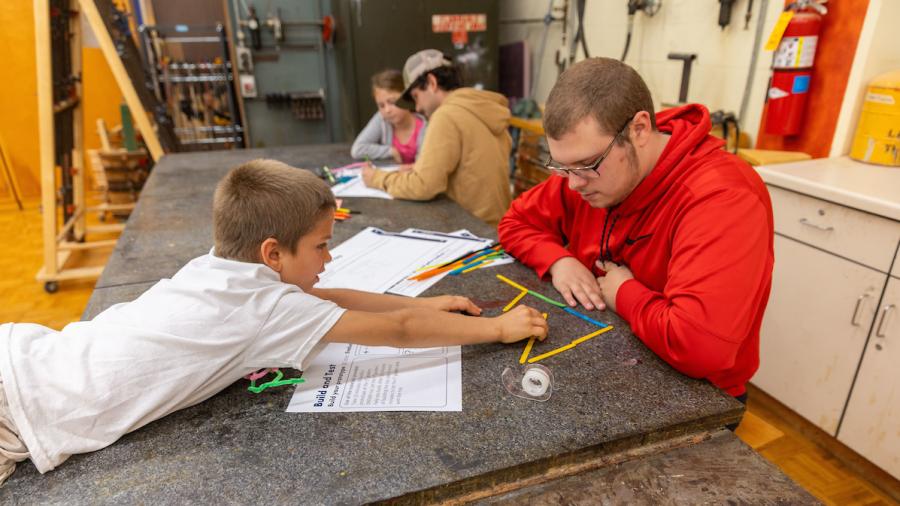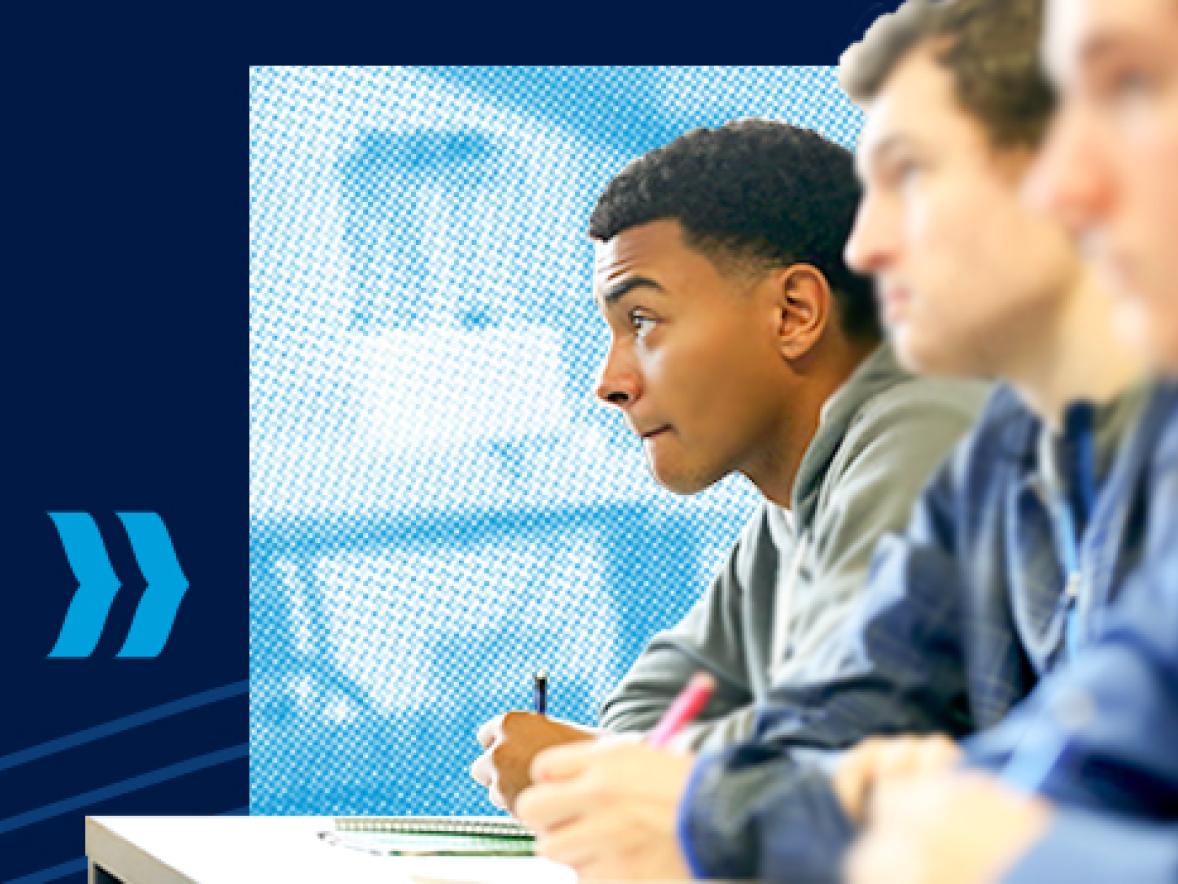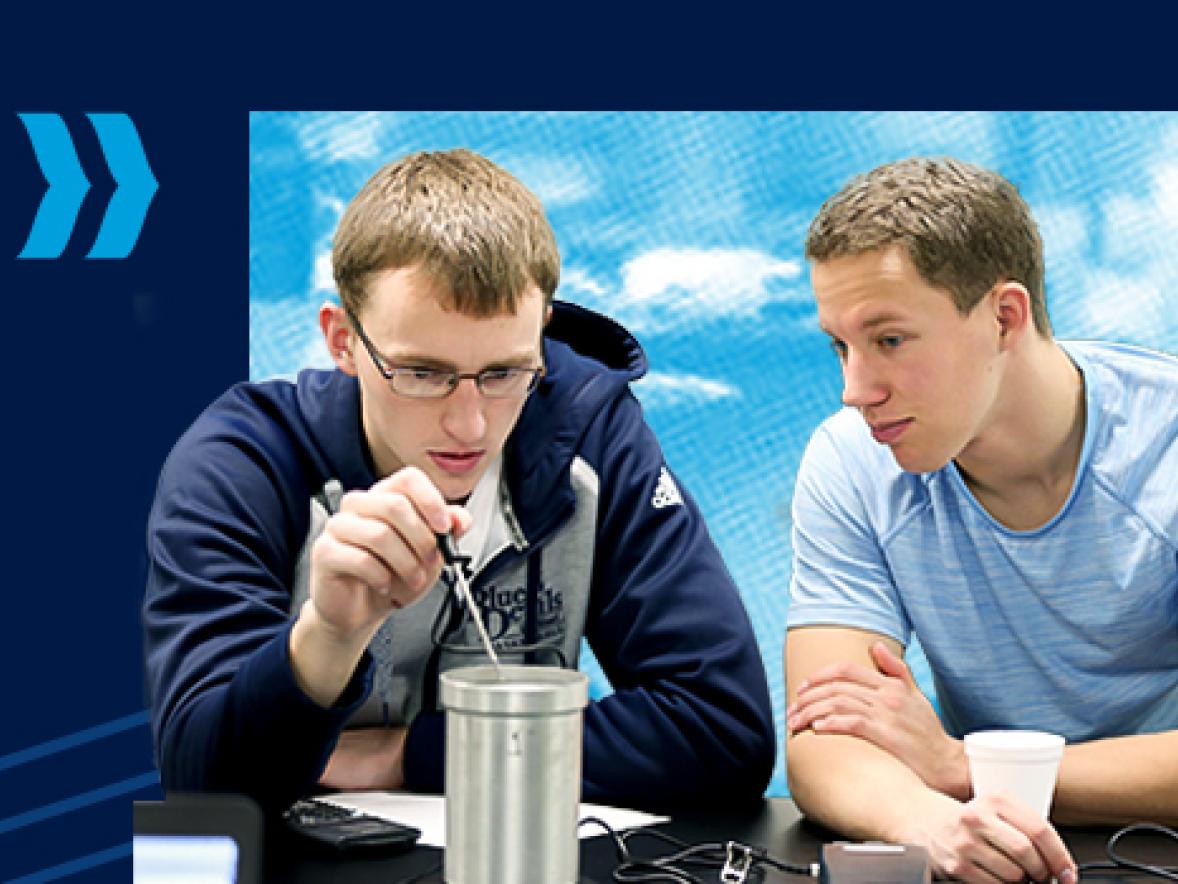On an early fall morning, 23 children from St. Paul’s School of Menomonie recently walked four blocks to UW-Stout’s Woods Lab in Jarvis Hall Tech Wing, unknowing of what their day would bring.
Lining up single file at the back of the classroom, they quietly peered over university students in a Design for Industry class led by Assistant Professor Kevin Dietsche.
“Everything is designed in this world,” Dietsche said. “Today, you get to work with college students to design toys.”
“Toys!?” the children excitedly echoed back.
Together, the children and university students worked in teams to build rough prototypes of their ideal toys using paper, cardboard, scissors, tape, pipe cleaners, clay, tin foil, Legos, glue, markers, crayons and other supplies, as part of a three-year, cross-disciplinary project that will result in a finished product donated to local children.

The collaboration started last spring, when the engineering and technology department partnered with the City of Menomonie’s Urban Forestry Board to obtain a dozen ash trees cut down in the city. The department then sawed the trees into lumber.
“Part of the idea is to take something dead or dying and make it new and useful again. To give it new life,” Dietsche said.
“We have a great collaborative effort between the business administration, engineering technology, technology education and packaging programs, while supporting student development,” he added. “We are excited about continuing and partnering with outside entities, like the city and local schools, as we embark on this project, using an adapted, human-centered design process. This is a special class and an extremely awesome opportunity to work with the first-graders.”
‘Letting their creativity come to life’
At lab workstations, the teams let their imaginations run wild, beginning with a brainstorming “Get to Know You” activity, with questions designed to help the big kids understand their younger teammates’ interests, from toys and games to shows and movies, favorite characters, colors and shapes. Anything to help inspire the next steps of doodling what their toy might look like, what features it would have or what actions it might perform.
When asked if they had made their own toys before, two children described the cardboard houses and swords they built and decorated with markers. Another child described a special car that she and her dad welded, spray-painted and displayed in their yard so they could “always rememberize it.”

Anne Rust, the children’s teacher at St. Paul’s, was excited for her students to participate. “It’s letting their creativity come to life. They love to draw, create and build,” she said.
Dozens of tiny shoulders shrugged as they thought of how they could bring their ideas to life – a toy horse organizer, a robotic arm to paint on canvases, fireworks to celebrate Hannukah, transforming robots that could fly and shoot fire, dragons, swords and shields, twirling acrobats, walking cats, a miniature doghouse complete with pet accessories and a triple jump rope (because one is just too easy).
Crayons and markers in every color of the rainbow scattered across the tables as the Design for Industry students encouraged the children to doodle their ideas, building trust through creativity, laughter and conversation. The college students helped apply Band-Aids to scrapes and retie shoelaces – remembering what being a kid is all about. They then built low-fidelity prototypes of the toy concepts using arts and crafts supplies.
“It was just awesome to see the many interactions between the college students and the first-grade class. There are many stories to be told and lessons learned through the prototypes developed. I look forward to seeing how these toys develop over time,” Dietsche said.

The Design for Industry class’s next step is to build mid- to high-fidelity prototypes of the toys using the ash tree lumber over the next few weeks. The class will then visit their first-grade friends for feedback and give each child a prototype in wood form.
Once the prototypes are finalized, they will be passed to an Engineering Capstone course. And over the next few semesters, groups from this course will build a manufacturing cell, an automated machine, to produce a given toy.
“Once the manufacturing cells are completed, we hope to use the remaining ash lumber to make lots of toys and give the ash trees back to kids in the community through various means, like Toys for Tots,” Dietsche said.
The project is supported by the G.A. Taft Manufacturing Engineering Endowed Professorship, which Dietsche was recently awarded and which is for a three-year term.
Connecting with community and clients
Dietsche believes Design for Industry is a special class because of its cross-disciplinary nature. Students represent several degree programs and can apply their unique skill sets to the collaborative toy project.
Technology education junior Lucas Edson, North Branch, Minn., is a lab assistant in the Woods Lab. He took Design for Industry last spring when students collaborated with community members with disabilities to design adaptive devices.

“I’m always looking for ways to reach out to our community. These projects help you walk a mile in someone else’s shoes and make a connection with people,” said Edson, whose favorite toy growing up was a toy tractor.
Edson pre-student-taught at Hudson High School with educators in the woods and metals labs. He would love to coordinate similar projects when he has his own classroom.
“As a first-grader, I think it would be inspiring to work with the ‘big kids’ to build something new, to build that connection. As a kid, it would be cool to see your community revolving around – to give someone something you helped make through your own creativity,” he added.
Engineering technology junior Isaac Resch, of Menasha, learned to build safe concepts in a previous machine design course. “I can bring knowledge from that class into this toy-design project and use those skills to help build a safe toy based on a first-grader’s design,” he said.
Business administration junior Lou Enriquez, of Menomonie, thinks the project will be good practice for learning about different clients’ needs and interests and problem-solving with them. “This will give me experience working with a different age group and audience, even if I won’t be working with children in my career,” she said.

Packaging junior Isaiah Rolli, of Medford, has completed co-ops with EcoLab and TEN-E Packaging Services. “This project is good practice for interviewing clients for product design, knowing their product restraints, listening to make sure we design what the client wants, and to support them and work to fix any problems,” he said. “Communication is similar when working with professionals or with kids. They know what they want. I need to listen to help create the right product for them.”
‘Student success is everything’
Before the children arrived, several professors and leaders joined the Design for Industry class and spoke to the students about why they are invested and interested in the project and believe it showcases the strength of the university’s Polytechnic Advantage.

Technology education Program Director Barb Bauer and international business and entrepreneurship Associate Professor Mary Spaeth are excited to watch the project unfold. Students in the entrepreneurship and innovation minor take the class and understand it can take many people to bring an idea to fruition.
“The polytechnic university gives business students the ability to experience prototyping-in-action and access to engineering partnerships as they consider product and service development in business,” Spaeth said.
“This is an opportunity for students to understand the ‘why’ of a first-grader. Customer discovery is hard. First-graders are approachable, but they are not easy clients. They know what they want but may not be able to articulate their ideas easily,” Spaeth added. “I really enjoy collaborating with and learning from my colleagues across campus, including Dr. Dietsche. In business, we always want to learn more about what we can help to produce.”
Provost Glendalí Rodríguez believes the power of education keeps her inspired, and that “with education comes opportunities.”
Her family is from Puerto Rico, and her background is in architecture. “My family grounded me in the value of education, even as I felt that I stuck out in higher education and in construction as a Puerto Rican woman,” she said.
With a background in English, Chancellor Katherine Frank designed problem-based exercises for her students, pushed them to think about the lessons learned in their writing and literature classes and apply those lessons to their chosen fields.
“What we center on at UW-Stout is our students,” Frank said. “We have a responsibility, through our philosophy at Stout, that student success is everything. That resonates with me. Everything that we do focuses on student success.”

UW-Stout’s engineering and technology department offers six undergraduate degrees, including computer and electrical engineering, manufacturing engineering, mechanical engineering, plastics engineering, engineering technology and packaging, as well as four minors and a master’s in manufacturing engineering.
Technology education is offered through the School of Education, home to nine undergraduate degrees, five graduate degrees, certificates, certifications and online professional development courses.







